Of all the many different vacations you can take on this huge planet, an African wildlife viewing safari should be high on your bucket list, and Uganda promises nothing less than the rarest wildlife experiences. If you’ve travelled extensively and are a passionate traveller, it is hard to imagine that you wouldn’t enjoy a wildlife experience in Uganda – even those who might not think it is for them. A wildlife experience in Uganda is so gratifying and stunning. It connects you back to the natural world that everyone should experience – that once-in-a-lifetime journey you could have every year for the rest of your life.
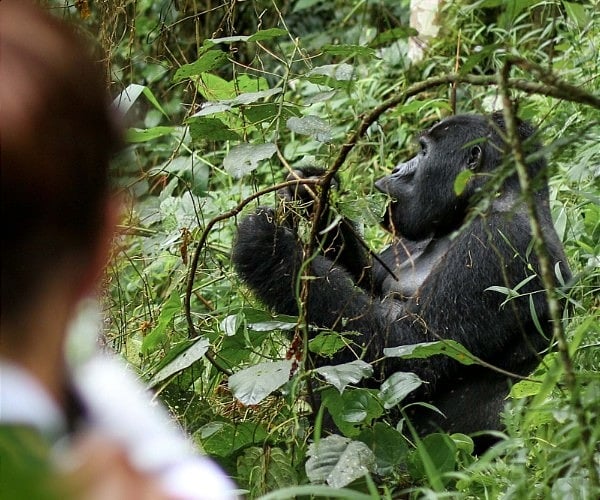
Unlike a castle, ruin or museum, Uganda offers living experiences full of living things. Every single day on your trip will be different. You will see plenty of primates, elephants, giraffes and lions, but you may have to visit more than once to see and really enjoy a leopard or cheetah, or gorilla. Uganda gives you the wildlife experience in forests, savannahs and mountains, which is rare in most wildlife destinations.
Besides the natural beauty and unimaginable majesty of nature, Uganda’s safari travel infrastructure is superb. Some of the most luxurious safari lodges straddle the outskirts of rainforest and savannah destinations. The best lodges have great services, and excellent safari guides, and lead trips in uncrowded national parks. The entire wildlife experience in Uganda is educational, entertaining, and a non-stop thrill ride, yet extremely relaxing.
If you are planning a wildlife vacation in Uganda, here are two of the most gratifying experiences you must include on your itinerary.
Locking eyes with a giant silverback in the misty mountain rainforests of Bwindi Impenetrable National Park
Travellers that have been fortunate enough to visit wild mountain gorillas in southwestern Uganda’s forested mountains speak of it as a profound, almost ethereal, experience. Something in their expressions speaks to the heart of what it means to be a sentient being. It is even more meaningful knowing that such visits significantly contribute to the well-being of these majestic animals.
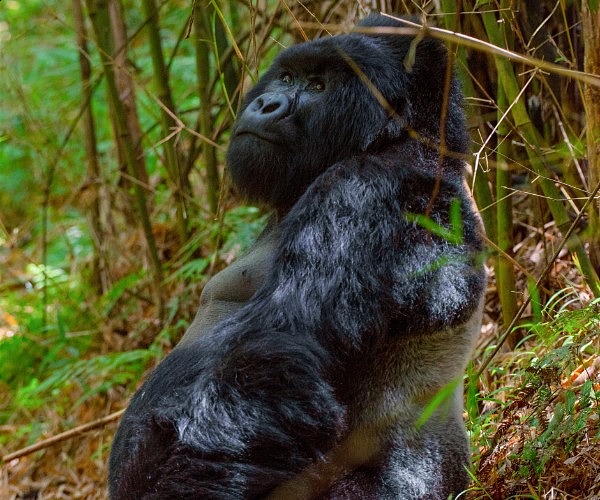
Unlike Rwanda and DRC, the other two countries with mountain gorillas, Uganda has two national parks harbouring more than half of the last endangered mountain gorillas on Earth. Mgahinga National Park, located on the tri-border with DRC and Rwanda, shares habitat with Rwanda’s Volcanoes National Park and DRC’s Virunga National Park. The tiny park protects the slopes of three dormant volcanos, making it a popular destination for day hikes through incredible vegetation with a wildlife spectacle. Although the scenery is quite fascinating, the most endearing adventure that would bring you to Mgahinga is watching the endangered giant apes and cute little golden monkeys.
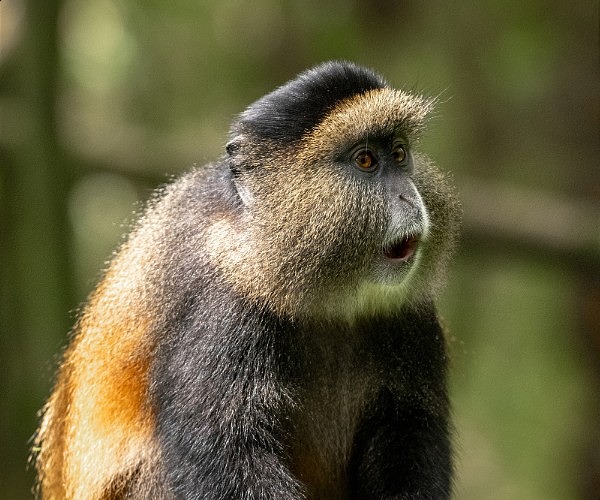
The outstanding Bwindi Impenetrable National Park is the best place to visit the mountain gorillas in Uganda’s wilderness. With the largest population of mountain gorillas, Bwindi offers four park entrances with some of the most affordable and luxurious safari lodges, making the gorilla trekking experience accessible to more travellers.
For the gorilla trekking experience, you must book a trekking permit before you go and book at least two nights in a safari lodge outside the park. Gorilla permits can be scarce and tricky to procure, especially during the peak summer season of June to August. So book with a trustworthy and vetted tour operator to make planning easier for you.
Mountain rainforests, where gorillas live, are steep and have a high altitude of about 8,000 to 13,000 feet – undoubtedly something to consider. However, it’s not a technical climb, so most visitors don’t need help. You may feel shortness of breath, but you can take a local porter to help you, and the guides take you slow and steady. You’ll find it easier when you prepare your body for the toughness before you go. But no matter how much you sweat, how much muscle you stretch, how many tears you shed, the minute you lock eyes with the Silverback, it’s worth every moment.
IMPORTANT NOTICE:
If you are reading this article anywhere other than on A Luxury Travel Blog, then the chances are that this content has been stolen without permission.
Please make a note of the web address above and contact A Luxury Travel Blog to advise them of this issue.
Thank you for your help in combatting content theft.
Visitors convene at the visitor centre in small groups of eight tourists for each habituated gorilla family and are guided into the forest by a local expert tracker and two armed rangers.
And once you get in the same area as the gorillas, you will see footprints and broken branches; the guides will ask you to take off your bags and leave anything back, and that’s when the nerves kick in because you know that the giant beasts are nearby. At first, you may not trust your eyesight seeing these huge, black, and furry bodies against the greenery. Your first glimpse may be a face half in shadow. You walk towards them cautiously. You may hear something behind you, turn around, and see a juvenile gorilla walk past. As you become familiar with your surroundings, you realise they are everywhere around you – in front of you, beside you or a couple of them in the trees above you.
They’re very much like us. They live in family groups, and they kind of worry about the same things. They are emotional beings. A dominant Silverback, the leader, ensures the group is kept safe and well-fed. Everyone in the group follows him. The females keep the babies and the newborns near them, ensuring their safety. You’ll see Blackbacks, who haven’t quite reached the maturity of the Silverbacks, usually showing off like teenagers, unsettled, playing ruff and tumble. And then, of course, the most adorable babies and toddlers, taking their first tentative steps and falling over, doing somersaults and climbing on the backs of their patient Silverback fathers.
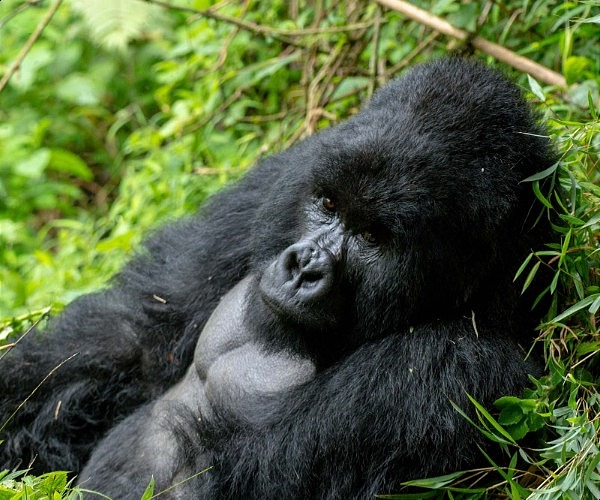
The gorillas may come to you, but you have to be sensible. The rule is to stay about 10 metres (33 feet) from a gorilla. But expect the gorillas to stand close to you. They can be at a safe distance, and suddenly, the Silverback will brush past you and step on your boots. There is a lot you can do to stay safe. But to see a Silverback walk past you, it’s mesmerising and heart-stopping.
This incredible experience is crammed into 60 minutes; that’s the thrill of the experience — that it could end anytime while you are still engrossed in the wilderness charm. And you keep your eyes open, and the more carefully you look, the more you see. Sixty minutes will go by in a heartbeat, and before you know it, you’ll be back at your lodge looking down into the forest canopy wishing to return to the wilderness.
Walking with a troop of wild chimpanzees in Kibale Forest
Imagine walking in an African tropical forest with hundreds of hyper-active chimpanzees swinging in the treetops above you and others walking a few feet right next to you. It is one of the most thrilling wildlife experiences in Africa that few travellers experience. And it costs a fraction compared to tracking gorillas in the mountains.
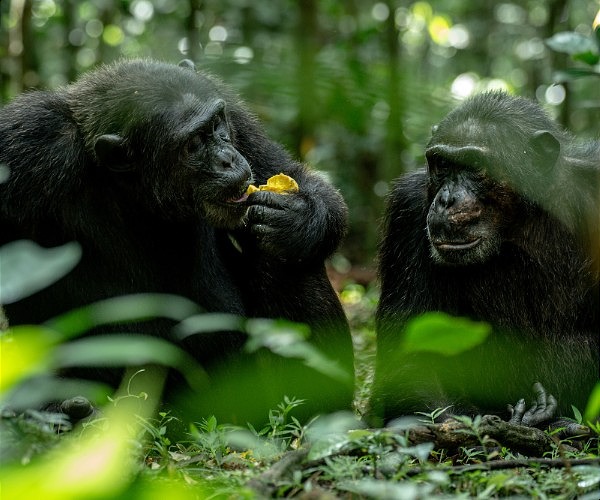
There are about 300,000 chimpanzees left in the equatorial forests of Africa, and about 5,000 find blissful refuge in Uganda’s rainforests. The best natural habitat where you can watch wild chimpanzee troops at close distance is Kibale Forest National Park in western Uganda, where some troops have been Habituated for tourism and are within easy walking distance.
![]()
We all know that chimpanzees are our closest genetic family – sharing around 98% of our DNA and human-like behaviour that has attracted scientists to study them more than any other animal. Celebrated primatologist Dr Jane Goodall first observed their astonishing human-like behaviour in the 1960s when she lived with a community of chimps in Tanazania’s Gombe National Park. She then proved that chimpanzees hunt, forage and use tools—ideas that were completely unknown about these creatures. Her fascination with the great apes is within us; that’s why we are drawn to adventure


